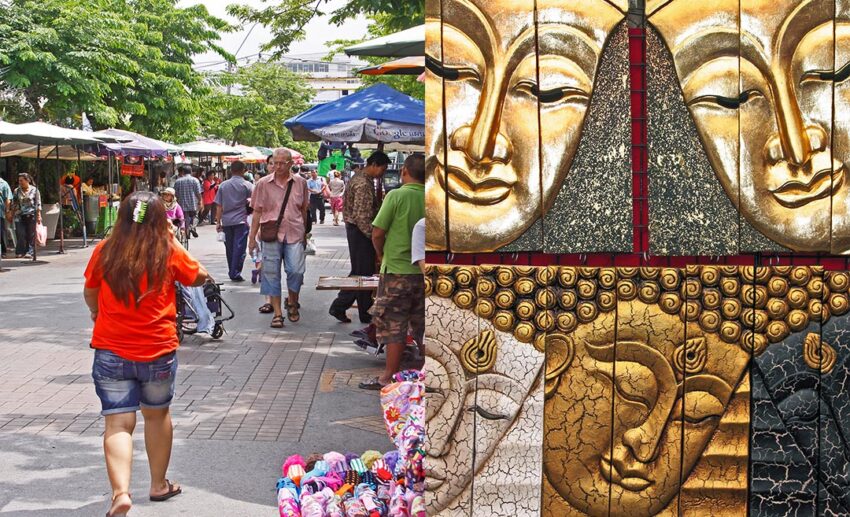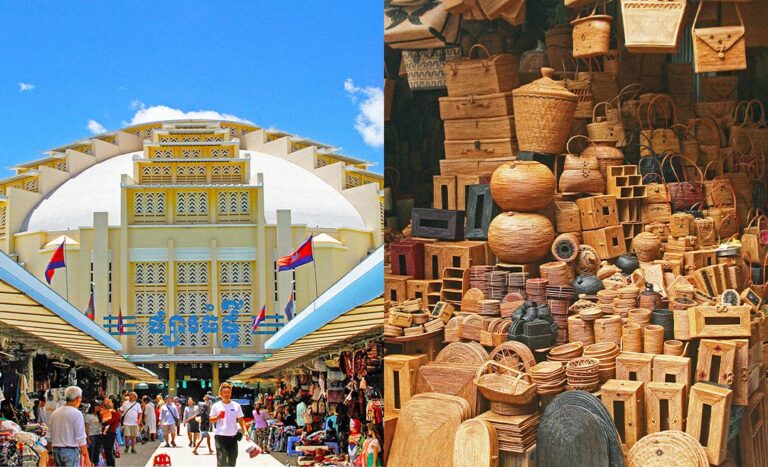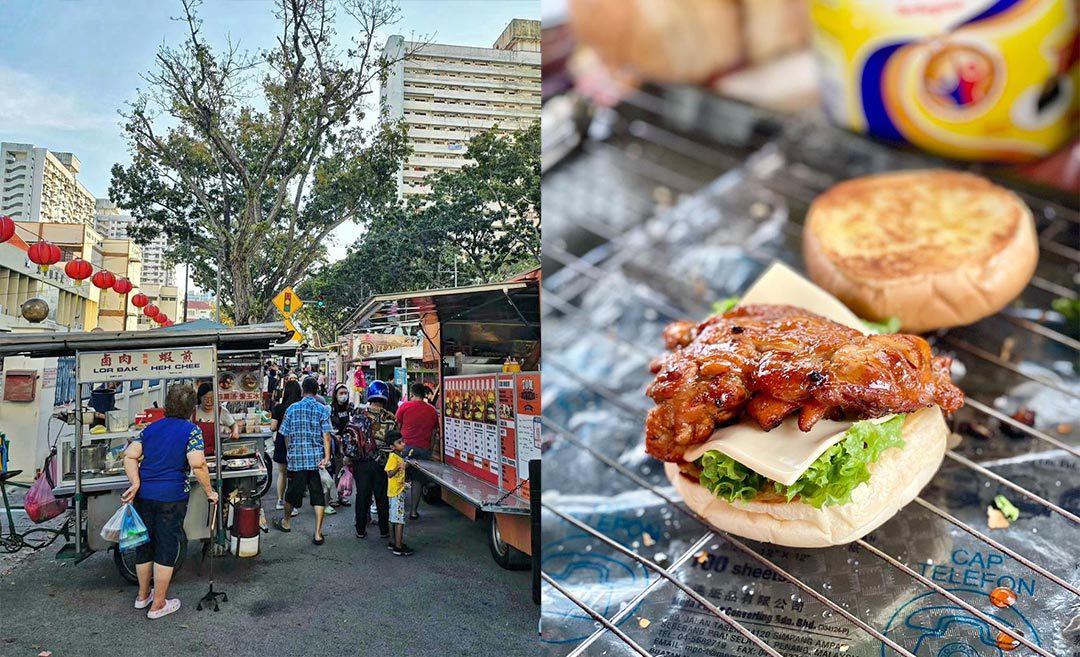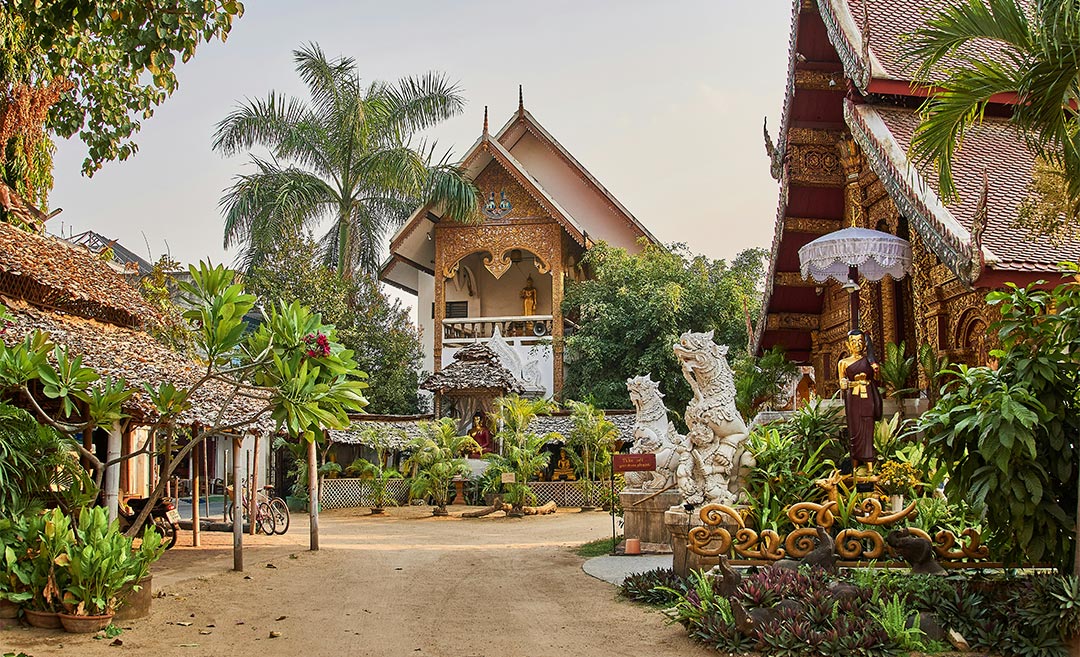Everyone loves seeking out bargains, and Southeast Asia’s markets are where some of the best deals are found. The region’s markets occur at different times of the day and night, as well as at different times of the week or even the year.
Here’s a selection of some great regional markets, from Malaysia’s pasar malam to Chiang Mai’s hill tribe markets. All these bazaars are charming in some way and are etched into my memory as the region’s finest markets to visit.
Be aware that markets come and go, and as they grow in popularity, so does the influx of tourists, the inevitable two-tier pricing policy (locals vs tourists), and the general hassles that all this involves. I suggest doing your research beforehand, as one person’s heaven can be another’s hell.
1. Central Market, Phnom Penh, Cambodia

What better place to shop than the rambling, covered Central Market in the middle of the capital? The art deco Psah Thum Thmei, or Central Market, is a landmark building dating back to 1937. It was built during the French colonial era with a high central dome and four arch-roofed extensions branching out diagonally. When it opened, the structure was regarded as the largest market in Asia and still operates as a hive of economic activity.
Most of the antiques and old silk textiles have been replaced by contemporary and more commercial items, but there are some collector’s pieces available. Fresh produce and stalls selling Khmer snacks are also housed under the expansive roof.
Phnom Penh has other markets, including Psah Tuol Tom Pong, which was once referred to as the Russian Markets when the country came under the sphere of the Russians in the 1980s, and lots of surplus Soviet goods flowed into the country. These were some of the few goods available in a country that was then isolated from the rest of the world.
2. Chatuchak Market, Bangkok, Thailand

Over the past decade, Bangkok‘s Weekend Market, or Chatuchak Market, has become the mother of all markets. Okay, it’s hot, sweaty, huge, crowded, mind-boggling, and definitely not for anyone seeking a refined shopping experience, but the low prices more than compensate. There are so many bargains here that it’s hard to identify the best, so take an empty backpack and shop on.
I especially like the Thai creativity and designer items amongst all the touristy souvenirs, and I prefer to seek out items with individual styles and quality. There are lots of small places to drink and eat, and who can resist Thai food? Catch the Skytrain to Mo Chit Station, and from here, it’s a five-minute walk to the market; just follow the crowd.
3. Chiang Mai Night Bazaar, Thailand
Years ago, the mysterious hill tribe people living in the hills surrounding Chiang Mai in northern Thailand brought their wares into central Chiang Mai. Sadly, more commercial products now dominate the markets, but some quality items are still among the mass-produced souvenirs. Almost anything and everything is on sale, but you have to decide upon its authenticity.
The food stalls are also good, and the beverages are always chilled. Join the fun, go with the flow, enjoy the banter, and don’t be disappointed if what you buy isn’t the collector’s item you thought it was at the time of purchase. Warorot Market is a more authentic local market that offers fresh produce and is located some 20 minutes away on foot.
4. Gaya Street Sunday Market, Kota Kinabalu, Sabah, Malaysia

The sun rises earlier in East Malaysia than in Kuala Lumpur, so, many activities like markets, also start earlier. Gaya Street Sunday Market in downtown Kota Kinabalu kicks off early and finishes around noon. It’s very popular with locals and tourists.

The locals also come from many ethnic backgrounds, including neighbouring Philippines, so there’s a huge range of products. While the locals seek out pots, pans, plastic buckets, fresh fruit and vegetables, and a ‘cure-all’ from a medicine man, tourists will be attracted to the souvenir stalls selling t-shirts, jewellery, beadwork, and rip-off goods.
I especially like the Tenom coffee stall that sells freshly ground local beans. Various restaurants line the street, some doing a lively trade selling dim sum to locals who seem to have come for miles for the Sunday street theatre.
5. Luang Prabang Markets, Lao PDR (Laos)

Take your pick: the Talat Dala morning market or the night market along Sisavangvong Road. Luang Prabang in Lao PDR is one of the region’s must-visit tourist destinations, and its rise in appeal correlates closely with its recognition as a World Heritage Site in 1995.
Situated at the confluence of the mighty Mekong and Nam Khan Rivers, the former Lao capital has many appealing qualities. Various hill tribe communities travel to the markets to sell their woven textiles, especially those from nearby Ban Phanom Village. Sadly, mass-produced textiles and souvenirs are replacing traditional crafts, but the authentic ones are still available, albeit at a more expensive price.
6. Padang Matsirat Night Market, Langkawi

Night markets (pasar malam) are as Malaysian as Cameron Highlands tea and nasi lemak, and each city or town has its own evening market on specific nights. Hawkers and traders normally set up their stalls well before sunset with fresh fruit, vegetables, meats, and freshly cooked snacks to eat in the market or for take-home consumption.
This Langkawi night market is as good as any, and it’s more popular with the locals than tourists. Almost every evening on the island is market night, with others staged on the island at Pekan Kuah (Saturdays), Ayer Hangat (Fridays), Ulu Melaka (Mondays), and Temoyong (Thursdays).
7. Sunday Market, Bac Ha, Vietnam

It’s worth the drive over dusty mountainous roads to Bac Ha, a small village near Lao Cai, northwest of Hanoi, close to the Chinese border. The Sunday morning market mostly involves the locals until mid-morning, when tourists arrive to thrust their cameras into the faces of bemused hill tribe folk.
Colourful women from various tribes, including Dao, H’mong, and Nung, set up makeshift stalls to sell fresh produce, jewellery, textiles, and clothing. Prices have crept up since Bac Ha entered the tourist brochures offering tours titled ‘Hill Tribe Mystery and Intrigue’ or similar. The male villagers conduct a lively pony and dog market that may disturb card-carrying animal activists.
It’s a long way from Hanoi to Bac Ha, and visiting this market is best for those staying in the area, who appreciate hill tribe products, and who may be interested in taking a walk in the hills after visiting the market. If you are in the area on Saturday, visit the Can Cau Market, staged 30 minutes (by car) from Bac Ha every Sunday morning. Both are now tourist destinations, and bargaining at both is essential.
8. Ubud, Bali, Indonesia

For decades, images of the hills, markets, and crafts in Bali’s central foothills have been used to sell the tropical islands to travellers. Bali is one of the main island holiday destinations in the region, and while most come to chill out on the tranquil beaches, the mountainous inland offers a very different experience.
However, Ubud has been discovered, and tourists arrive by the minivan full, but the setting and atmosphere make up for the congestion. While most tourists won’t buy the many bunches of flowers on display, the spices, strawberries, and vanilla pods will be hard to pass up.
*All images provided are by the author, David Bowden.



